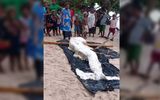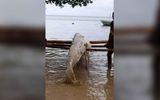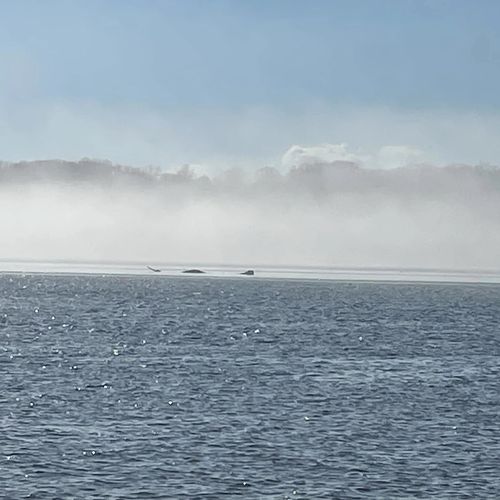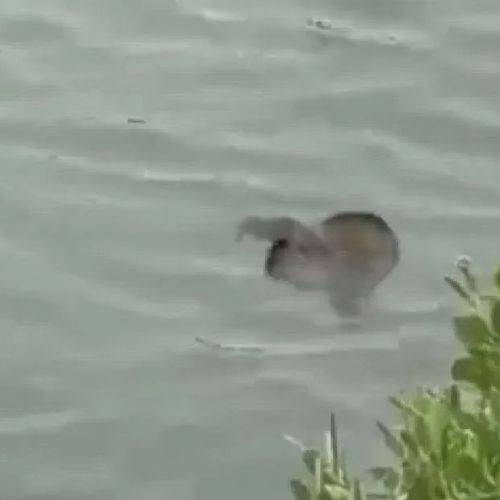| ID | #1698225650 |
| Added | Wed, 25/10/2023 |
| Author | July N. |
| Sources | |
| Phenomena | |
| Status | Hypothesis
|
Initial data
Simberi Island, located in the Papua New Guinea region, where locals encountered an unusual find, has become even more mysterious. The ocean washed ashore something that resembled the remains of a mermaid.
The carcass, thrown out by the ocean surf, was in a deplorable state. She practically had no head and some other parts of her body, and her length was twice the height of a person (judging by the photos taken by eyewitnesses).
However, due to the strong decomposition of the body, the exact identification of the mysterious creature became more complicated. Local residents, not wanting possible unpleasant surprises, prefer to bury the find as soon as possible, not allowing DNA to be taken.
The pictures of the "Mermaid" aroused the interest of biologists. Many people think that these are most likely the remains of a certain marine mammal. Marine animal specialist Sasha Hooker from St Andrews University suggested that it could have been a badly decomposed cetacean. Marine biologist Gavin Naylor from the University of Florida even said that it could be a large shark.
However, some researchers believe that the remains of a mermaid may belong to a dugong, a marine mammal related to extinct Steller cows. Erich Hoyt of the Whale and Dolphin Conservation organization, which is engaged in the correspondence of cetaceans, agrees with this view. The name "dugong" in translation from Malay means "sea", which leads to the similarity of this small animal with mermaids.
Hoyt's opinion is shared by the scientific director of the Pacific Whale Foundation non-profit organization, Jens Curry.
"The maximum that can be assumed is that it was a dugong," he told LiveScience.
Original news
A ghostly white lump of rotten flesh in the shape of a mermaid recently washed ashore on an island in Papua New Guinea — and experts baffled.
The strange sea creature was likely a marine mammal, but its exact origins are unclear, experts told Live Science.
The mysterious mass was discovered Sept. 20 by locals on Simberi Island — a small volcanic island with a population of around 1,000 people in the Bismarck Sea in New Ireland Province, according to a Facebook post by New Irelanders Only (NIO).
It is known as a globster — an unidentified organic mass that washes ashore. The origin of these mystery lumps is hard to pin down because much of the corpse has rotted away and most are missing body parts that have fallen off at sea. In this case, most of the creature's head and large chunks of its flesh are missing.
There is no information on the size and weight of the corpse because it was not properly measured before locals buried it, NIO representatives told Live Science. And no one collected DNA samples, which makes a proper identification almost impossible.
Experts were also unable to identify it from the images alone.
Helene Marsh, an environmental scientist at James Cook University in Australia, told Live Science it looks like a marine mammal. "After that it is anyone's guess," she added.
Sascha Hooker, a marine mammal expert at the University of St Andrews in Scotland, narrowed it down further. "It looks like a very decomposed cetacean to me," she told Live Science. Cetaceans, or whales and dolphins, are known to turn this color when their skin falls off, she added.
The most common cetaceans in the area are short-finned pilot whales (Globicephala macrorhynchus), spinner dolphins (Stenella longirostris), pantropical spotted dolphins (Stenella attenuata) and sperm whales (Physeter macrocephalus), according to a 2021 study in the journal Pacific Science.
Erich Hoyt, a researcher at Whale and Dolphin Conservation in the U.K. and author of several books on cetaceans, agrees that the globster could be a small whale. However, he believes that it could also be a dugong, or "sea cow," that is known to graze on sea grasses in shallow waters in Papua New Guinea.
Other experts also suggested it could be one of the pudgy marine mammals, which have previously inspired stories of mermaids. "My best estimate is that it might be a Dugong," said Jens Currie, chief scientist of the Pacific Whale Foundation in Hawaii. Based on what's left of the head, it looks too wide to be a cetacean, he added. And "the amount of blubber also indicates a marine mammal and not a shark," Currie said.
But not everyone thinks that the globster was a marine mammal.
Gavin Naylor, a marine biologist at the University of Florida who runs the International Shark Attack Files, thinks the remains could be from a large shark. Although "it is a little weird that all of the skin appears to have rotted off," he told Live Science.
Hypotheses
Famous creatures
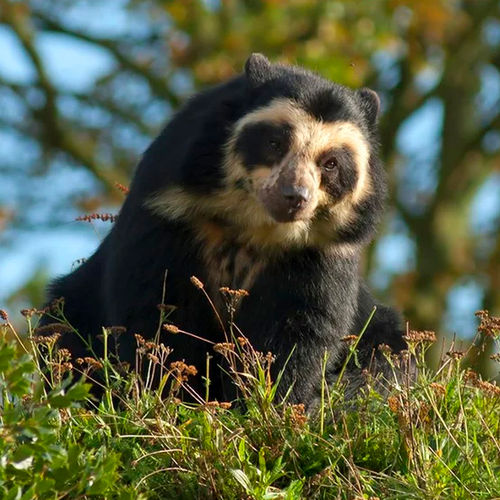
There are a huge number of different living organisms on our planet. According to recent estimates, the number of species of organisms on our planet is approximately 7-10 million. However, only 15% of the data are described today.
According to the calculations of Canadians, 2.2 million species live in the world's oceans, 6.5 million on land. There are only about 7.8 million species of animals on the planet, 611 thousand fungi, and 300 thousand plants.
Post-mortem changes
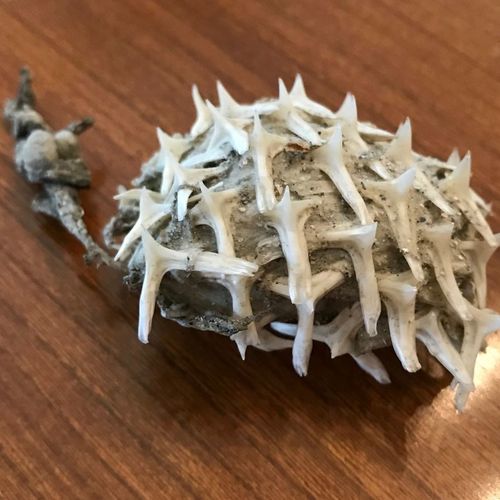
Because ordinary people are rarely familiar with the nuances of postmortem changes in organisms, it can often take them for something mystical.
Gray meat flies eat rotting tissue, leaving a sharp edge. This explains the "surgical" removal of organs and parts of the skin. However, such behaviors of the flies many take for the interference of aliens or attacked by unknown creatures.
The main signs of this injury:
Investigation
Resume
Similar facts
Log in or register to post comments
